Engines Type:
There are two types of jet propulsion engines: the rocket, and the gas turbine engine. Of these, the gas turbine engine powers almost all naval aircraft. There are four types of gas turbine engines: the turbojet, the turbofan, the turboprop, and the turboshaft.
TURBOJET:
• The turbojet is the simplest and oldest of the jet engines, supplanted by the turbofan. It is a continuous cycle engine that uses the Brayton-Joule cycle to produce the thrust necessary to make an aircraft move.
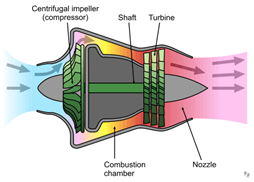
TURBOFAN:
• The turbofan is a type of jet engine which, unlike a normal turbojet engine, uses two separate air flows:
- The first flow, called hot flow, passes through all the stages of the engine, called: the air intake, which has the function of routing the flow by generating a first compression of the air, slowing it down, in the following stages, the fan (one or more stages), the compressor, the combustion chamber, the turbine (one or more stages), and the exhaust nozzle, where all the propulsion takes place.
- The second is a cold flow, on the other hand, passes through only the fan and nozzle, in the case of a turbofan with associated flows, or only the fan in the case of a turbofan with separate flows.
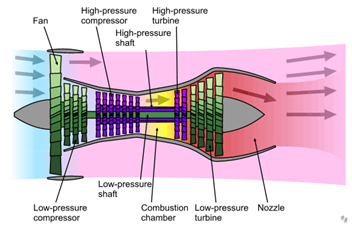
TURBOPROP:
• The turboprop is an aircraft engine consisting of an aircraft propeller driven by a turbine. It differs from the jet aircraft engine, in that in turboprop engines propulsion occurs mainly by means of air set in motion by the rotation of a propeller and to a lesser extent by the thrust of exhaust gases.

TURBOSHAFT
• The turboshaft engine is a type of gas turbine, mainly used on helicopters. Similar to a turboprop engine, to which it is similar in many ways, this type of turbine is not used to produce thrust (as in the case of a turbojet), but to supply power to a shaft. However, while in a turboprop engine the driveshaft connects the engine directly to a propeller, in a turboshaft the driveshaft is typically physically separated from the crankshaft and, via an additional turbine, converts the enthalpy of the hot gases, expelled from the engine, in power. This allows the drive shaft to rotate freely and at a speed independent of the rotational speed of the motor.
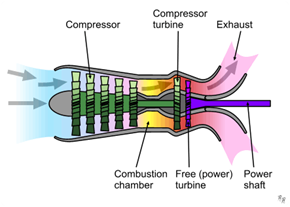
THE APU:
The APU is an auxiliary power unit installed on board a vehicle for the production of energy not directly used for propulsion purposes. It is typically found on transport airplanes, but also on some hybrid or large ground vehicles. A modern APU used in the aeronautical field consists of a gas turbine of small dimensions, which, connected to the electrical and pneumatic system of the aircraft, allows to supply energy to the on-board systems when the engines are off or in the event of a system failure.
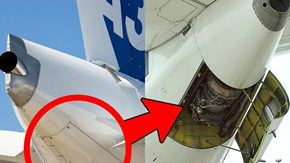
Flap and Slat:

- WINGTIP: In aerodynamics, the end flap, also called winglet, is a device used to improve the aerodynamic efficiency of a wing by decreasing the induced drag caused by end vortexes. The tip fin is a vertical or angled extension of the wing tip. There are 2 type of this: Winglet and Sharklets. The winglet are a triangle and the sharklets are looking like at the shark fin.
SHARKLESTS
** WINGLETS**
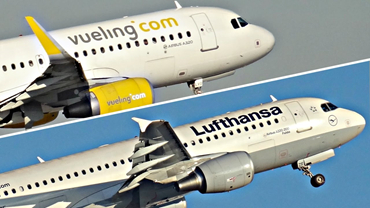
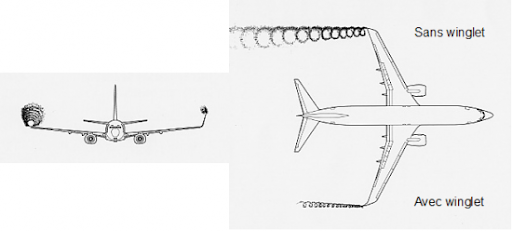
-
THE AIREON: The aileron is a movable part usually present in the trailing edge of an aircraft wing. It is raised or lowered to temporarily change the lift of the wing in which it is located, in order to allow the aircraft to move on the roll axis. The two ailerons are connected to each other so that when one lowers the other rises, so as to increase the lift on one wing and simultaneously decrease it in the other, thus producing the rolling movement along the longitudinal axis of the plane.
A side effect of using ailerons is lateral slip (technically referred to as reverse yaw), which can be counteracted with the use of the rudder. Modern airliners have a second set of ailerons on the inside of the wing, the one closest to the fuselage, which are used for greater stability at high speeds. Some aircraft use spoilers to achieve the same effect as with ailerons. (Same for n°3) -
SLAT AND FLAP: The flaps are mainly used during take-off and landing to increase the lift of the wing at low speeds. Slats are the same of the flap, but they are in front of the wing.

- SPOILER: In aeronautics, air brakes or speed brakes are a type of flight control surfaces used on an aircraft to increase drag or increase the angle of approach during landing. Air brakes differ from spoilers in that air brakes are designed to increase drag while making little change to lift, whereas spoilers reduce the lift-to-drag ratio and require a higher angle of attack to maintain lift, resulting in a higher stall speed. (9-10 in the picture)
Rudder:
The rudder is the small moving section at the rear of the stabilizer that is attached to the fixed sections by hinges. Because the rudder moves, it varies the amount of force generated by the tail surface and is used to generate and control the yawing motion of the aircraft.

Here is the file complete whit colors and images… It’s free. I white it this morning! Hope you enjoy! 
